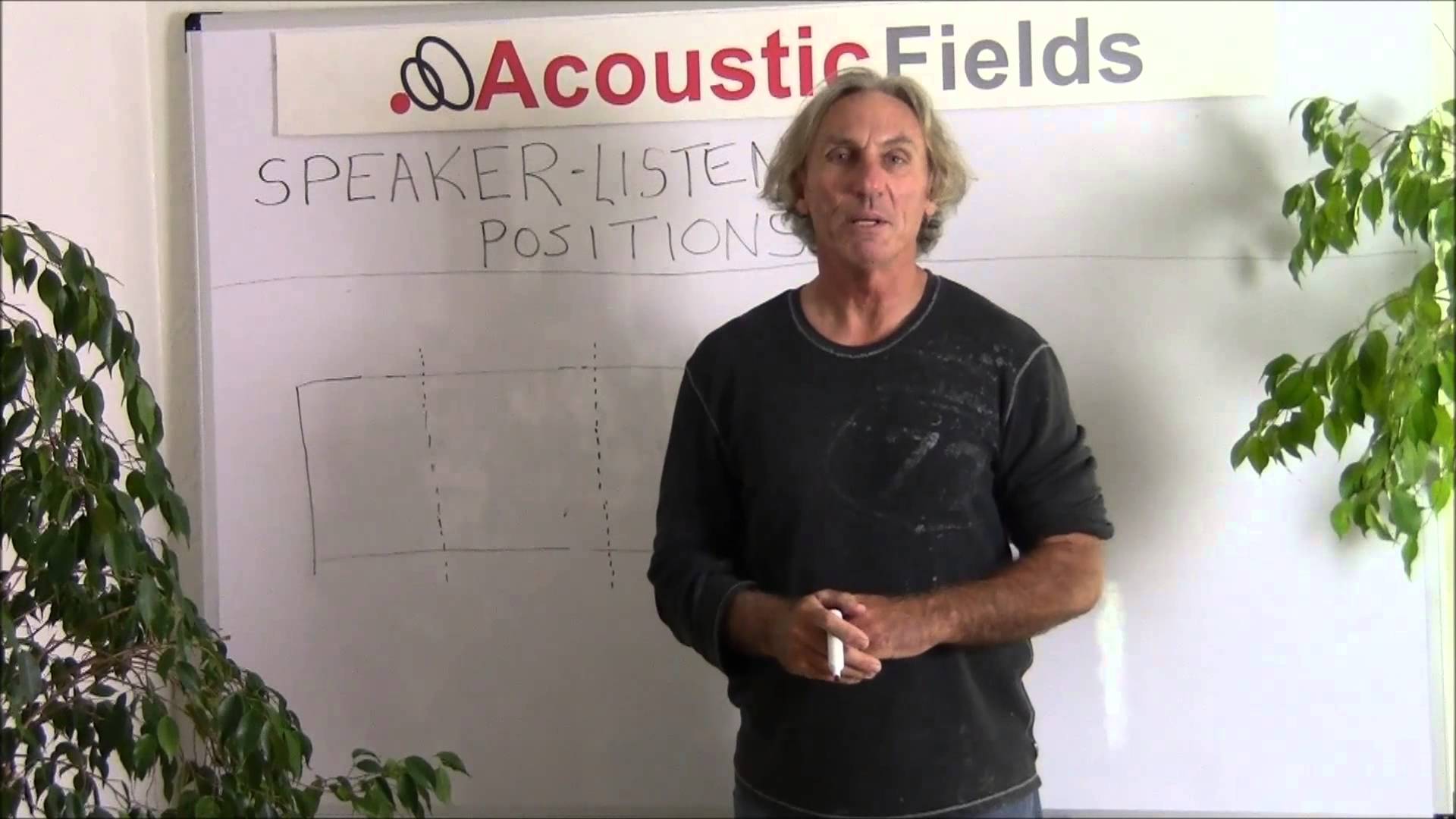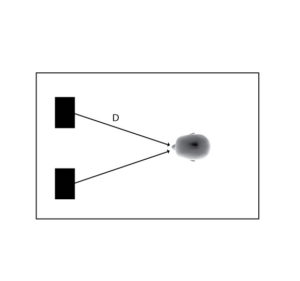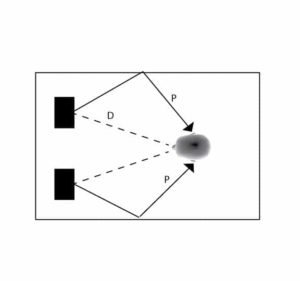In acoustic room setup part two, we will discuss how to locate the sound triangle, or the triangle formed by the speakers and listening position, in your room. We will also discuss how to deal with the reflections from room boundary surfaces. In Acoustic Room SetUp – Part One, we dealt with room surfaces, shapes, and unwanted cavities.
What is a “sound triangle”?
It is the imaginary triangle formed with the left and right channels and the listening position. It is an equilateral triangle because sound is an electromechanical signal that travels at a constant speed. It is this constant speed that is your friend and foe. It is your friend, if you have all the distances between your speakers and listening position calculated correctly and it is your foe if you do not respect the constant time travel signature of sound and have unequal distances and pathways for it to move through.
Sound Triangle
Distances in your “sound triangle” must be equal between speakers themselves and between the listening position and those speakers. The distances from the right channel speaker to the side and front walls must also be equal to the left channel set up. The left channel should mimic the right when it comes to distances between speakers and all room boundary surfaces. You can adjust the listening position up or back depending on what type of room usage you have. If it is a control room, you want to move forward in more of a near field listening position. In a personal listening environment, you might want to move the listening position more towards the rear of the room in order to open up the sound stage width and depth.
Floor/Ceiling Reflections
The reflections from your floor and ceiling reach your ears at the listening position first. The reach your ears before the side, front and rear walls. These inflections intermix with the direct sound from your speakers. The direct sound is the sound that leaves your speakers and travels in a straight line to your ears. The direct sound is the cleanest and purest of all sound because it does not contain any reflections. Reflections are the sound of your room intermixing with the direct sound. This “blending” of two energies with different time signatures must be managed correctly depending on room musical usage.
Side Wall Reflections
Side wall reflections or lateral reflections combine with the direct sound from our speakers. Side wall reflections are time delayed when we compare them with the direct sound. The amount of time delay must be addressed. There are time windows that must be observed if we are to hear most of the direct sound from our loudspeakers. The side wall reflections must be slowed down either through absorption or diffusion technologies in order to not cause any distortions within our sonic presentations. There are time windows that must be addressed that the side wall reflections must fall into in order not to become audible interference at our listening or monitoring positions.
Front And Rear Wall Reflections
Front and rear wall reflections also attack our listening or monitoring position. The reflections off of both of these surfaces wash over the listening position with similar time delays as our side wall or lateral reflections. Rear wall reflections can be manged through the use of absorption and diffusion technologies. Front wall reflections can also be managed using both absorption or diffusion, once again, depending on the musical objectives of the room. Control rooms are treated differently than listening rooms. Live rooms are treated differently than vocal rooms.
In Summary
In part two, we’ve discussed the “sound triangle” which is the positioning of your loudspeakers and listening position. All surface boundary reflections from both side, front, and rear walls must be treated in order to avoid intermixing at the incorrect time intervals when we are looking at the direct sound from our loudspeakers.
So I hope this explanation helps you improve the sound at your listening position. Please leave any comments below so I can get back to you. Don’t be afraid to hit those Facebook like, Google+ and Twitter buttons on the left hand side so other people can see this post. And if you want to learn more about this subject please sign up for our free room acoustic treatment videos and ebook which provide step by step instructions on improving the sound of your room. Get instant access by signing up now.
Thanks
Dennis









